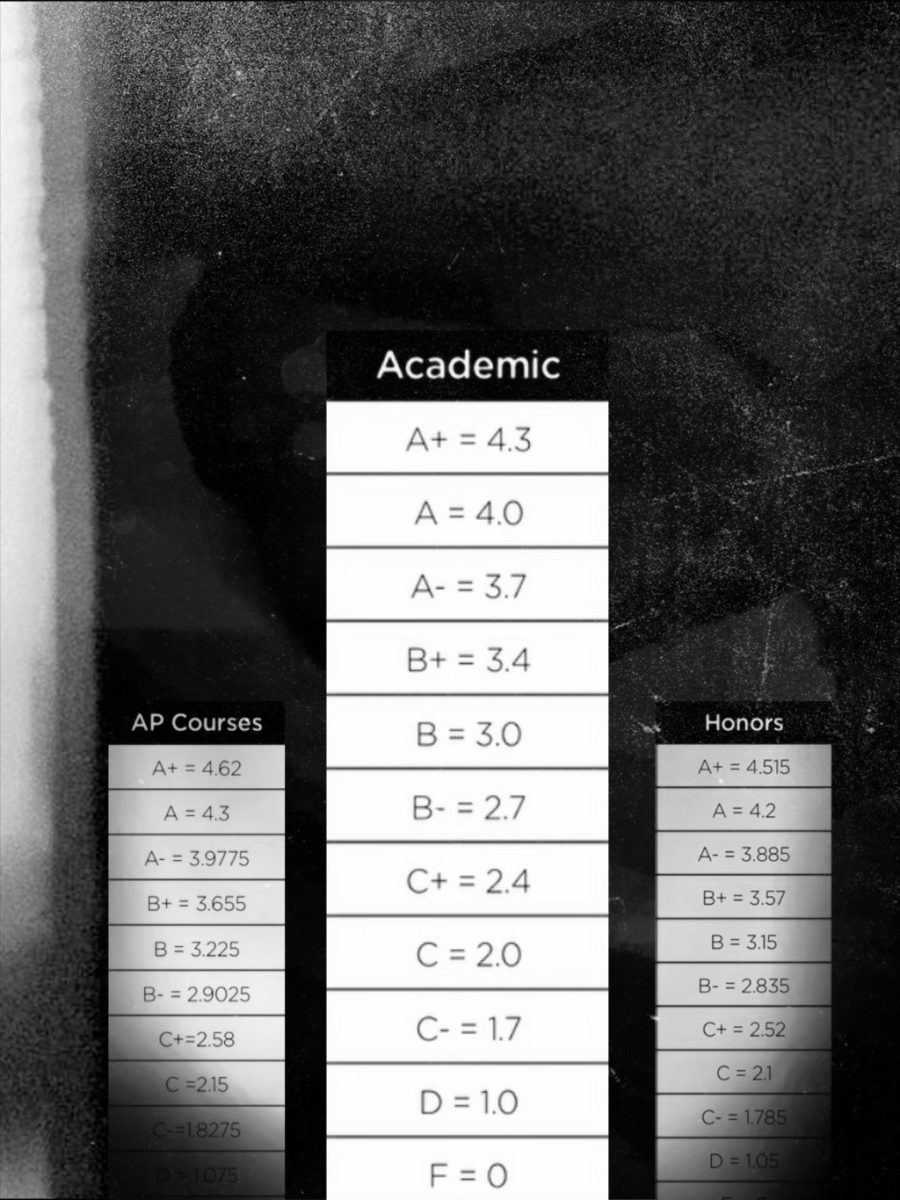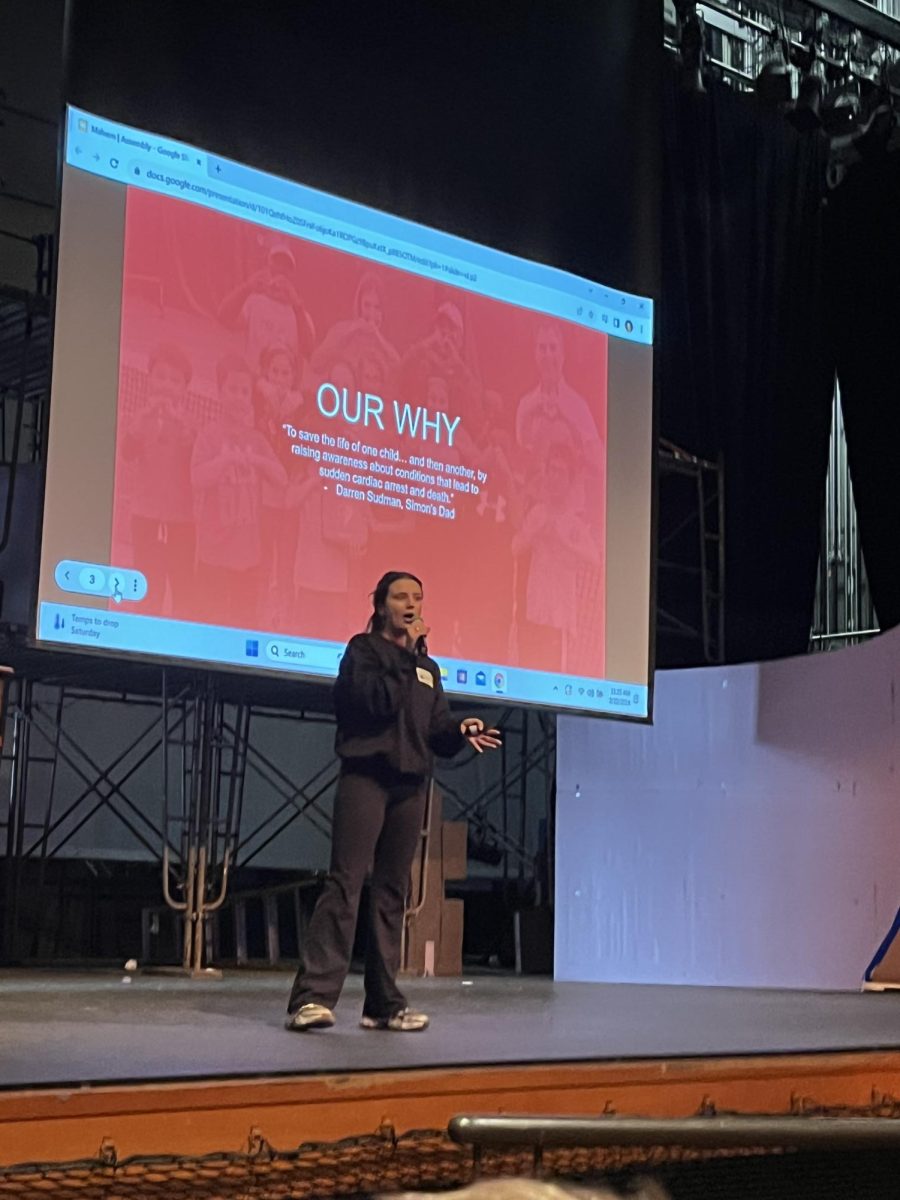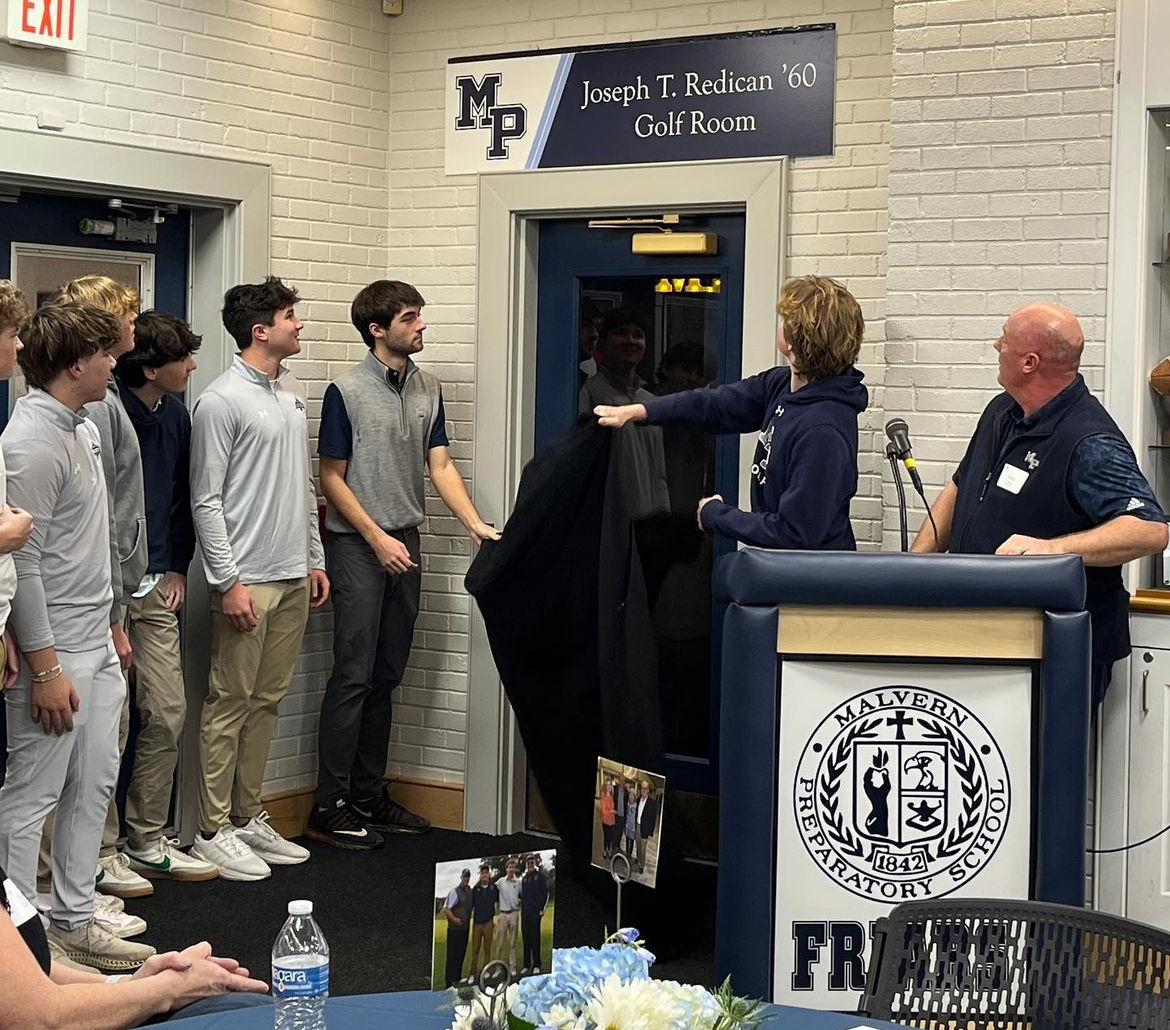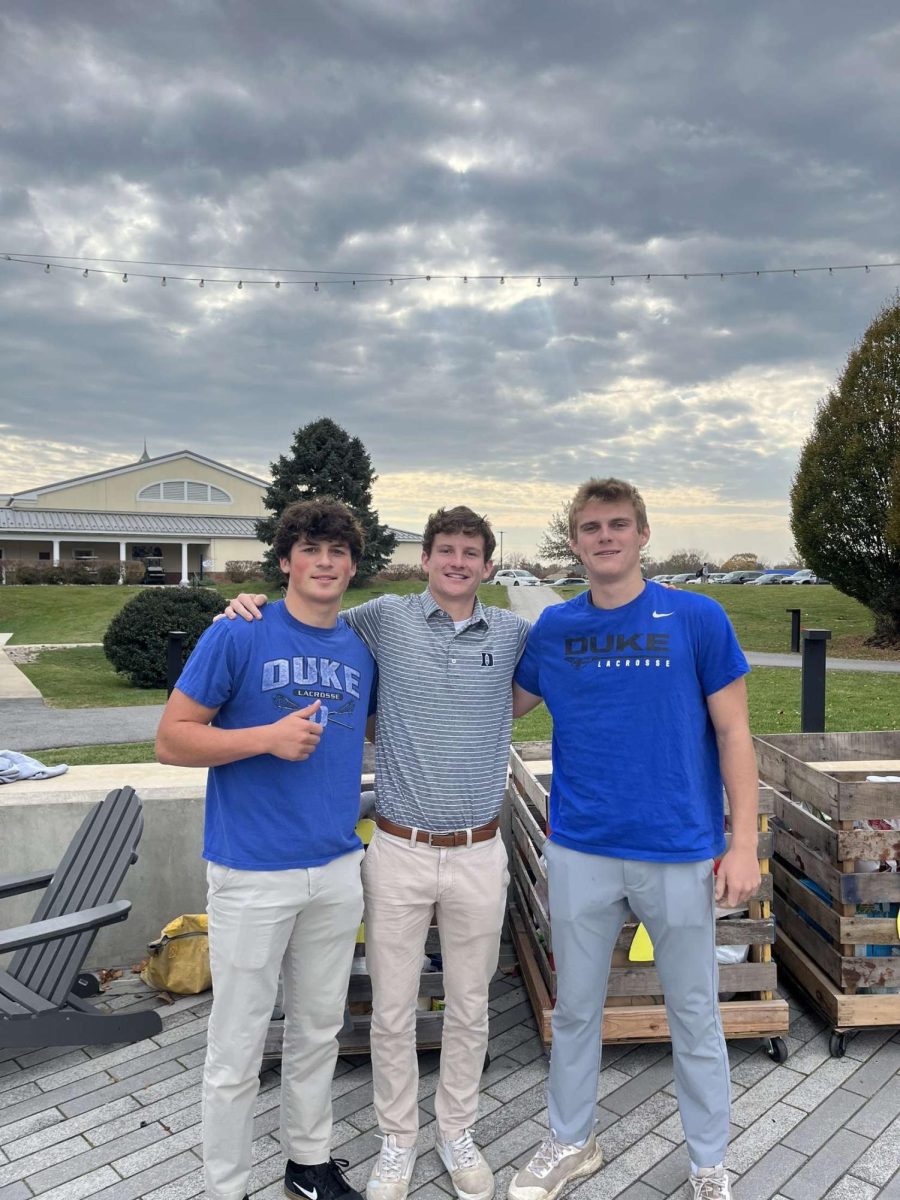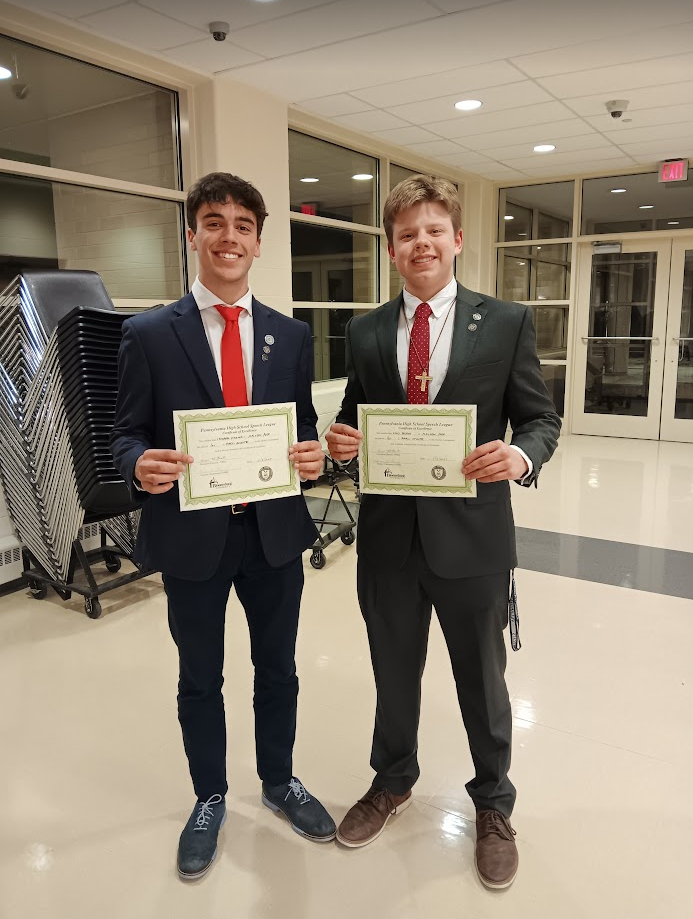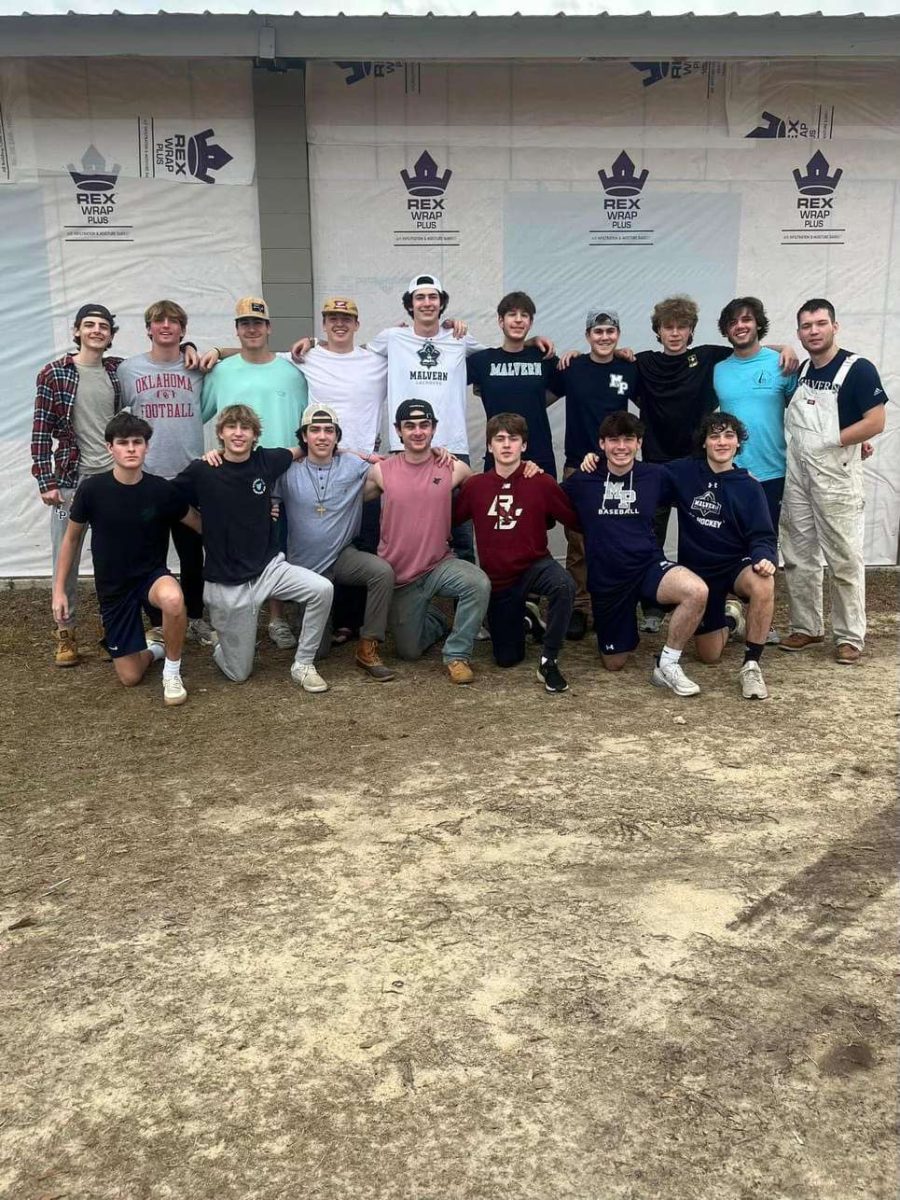
Jalen Wade ’17, Tyler Pizzico ’17
Our school’s reputation is shaped by tuition, diversity, athletics, and other facts. But individual experiences with Malvern students may have the most impact.
In a market like the Inter-Ac, a league of private schools that compete to recruit students in an area that is also home to some of the top public schools in the state, perceptions matter. What does Malvern Prep look like to people who do not attend the school each day?
¨I think we are viewed as being preppy, spoiled, and soft because the tuition is high and most of us grew up wealthy and differently from most people,” senior Matt Wray said. “Schools in the Inter-Ac think that we think we’re better than everyone else and we’re cocky.”
Senior Dom DiStefano thinks that perceptions of Malvern students vary from inside and outside the Inter-Ac League.
“I don’t think the other Inter-Ac schools have a biased perception of us, because we are very much like them,” DiStefano said. “I think outsiders [to the Inter-Ac] view Malvern students as being stuck up and being ‘Main Line rich kids.’”
Haverford School senior athlete Bryan Hyland only knows Malvern students from athletic competitions and social gatherings.
“I’ve heard people say that Malvern isn’t diverse and most students are rich,” Hyland said. “The way we interact with them at various social events and when we’re playing against them gives us that impression.”
While there are a wide range of opinions on our school body, some perceptions on our students emerge as a common theme. As a private school located in the wealthiest county in the state, how can our school combat negative stereotypes?
For Assistant Director of Admissions and Diversity Mr. Patrick Williams ‘03, it starts with creating an environment with both student diversity and diversity of opinions.
Diversity Matters
Williams is very conscious of how current Malvern students help to shape perceptions of the school. He noted that each interaction a Malvern student has with an outside family could be the only interaction that family has with someone from the school, shaping perceptions of the whole community. When a patron on a train sees a bunch of rowdy Malvern students, that might be their lasting impression of our school.
“As right or wrong as that may be, we need to be conscious of that responsibility in everything we do,” he stated in an email.
Williams, who is biracial and non-denominational Christian, said he grew up in a poor town in Delaware County.
[perfectpullquote align=”right” cite=”” link=”” color=”” class=”” size=””]Expanding student experience with peers who are different comes with building a school that is more diverse. With diversity comes a certain sense of unity. We unite in the fact that each person is different and has a different yet equally important part to contribute to Malvern’s success.[/perfectpullquote]
“I lived very much in two worlds, and I was viewed by many at Malvern who didn’t take the time to know me as the poor kid from the wrong neighborhood who didn’t belong or deserve to be here,” Williams said. “On the flip side at home, I was looked at as an uppity kid who attended the rich white school and someone who thought they were better than everyone else.”
Williams experienced being treated differently once he attended Malvern.
“I heard both positive and negative comments as I was called an oreo and the ‘N’ word and told to ‘go back to the ghetto where I belonged’ by classmates,” he said. “And I was called ‘white boy’ and ‘preppy’ by kids from my neighborhood.”
However, Williams eventually became close with some of the classmates who said insensitive things to him while he was a student. He credits insensitive remarks to his classmates’ limited experience with people who were biracial or from other backgrounds.
“Sadly, picking on and putting down the student who visually looks different than everyone else is one approach people take,” Williams wrote. “I will say that the more my classmates and schoolmates got to know me, the less those instances occurred.”
Expanding student experience with peers who are different comes with building a school that is more diverse. With diversity comes a certain sense of unity. We unite in the fact that each person is different and has a different yet equally important part to contribute to Malvern’s success.
In fall of 2013, the Board of Trustees unveiled a new plan regarding diversity, including a goal to increase diversity from 6.6% at the time it was rolled out to a schoolwide 20% by 2019. In March 2015, the Blackfriar Chronicle reported that the class of 2019 was projected to be the most diverse in the school’s history.
Efforts towards building that diversity include outreach and marketing to areas with greater racial and socioeconomic diversity, and implementing the SEED (Seeking Educational Equity and Diversity) training for faculty, according to Williams.
Williams is grateful to to see that Malvern is changing with efforts towards improving the school’s diversity.
“I think twenty years ago, the idea was that they were doing me a favor with the opportunity and that I and students like me should be grateful for that,” he stated. “That is to say that ‘the situation’ of me attending Malvern wasn’t viewed as mutually beneficial for me and the school. That narrative of the one-sided benefit is one that I feel has been changing over the past few years at Malvern. And that, I am thankful to be a part of.”
Senior Mike Fay already sees this diversity on campus; he just feels like it’s not the typical diversity people are looking for.
“Malvern kids are well rounded and are all unique. Many times the public thinks that we are exactly alike but we all come from different families and backgrounds,” Fay said. “I think that because of this diversity of students we are able to connect more to other people in general.”
Location & Socioeconomics
The location of a student’s hometown also seems to affect how others perceive his choice to come to Malvern.
According to The Friar’s Lantern 2016 Freshman Survey, 51 percent of the class of 2020 live in Chester County, where the median income in 2015 was $85,976, according to US Census Data, and 35 percent live in Delaware County, where the median income was $65,123. 13% reside in Montgomery County, and only 1% in Philadelphia.
Seniors Wray and DiStefano have both experienced being treated differently because they attend Malvern.
Wray lives in Delaware County and began attending Malvern freshman year.
“I have experienced it when I hang out with kids from other schools and everyone holds you to a higher standard and you’re expected to do everything good,” Wray said. “I went out to buy something and my friend told me that it should be easy for me because I attend Malvern and supposedly have a great amount of money.”
[perfectpullquote align=”left” cite=”” link=”” color=”” class=”” size=””]EDITORIAL: For better or worse, we control our reputation[/perfectpullquote]
DiStefano lives in West Bradford and began attending Malvern in seventh grade. Like Wray, he said others act unusually around him.
“It happens all the time. Some people that I used to be friends with act different around me and it’s awkward,” DiStefano said. “When I went to Downingtown events and wore Malvern gear, I just felt like I was being treated differently.”
DiStefano described a situation when he attended a Coatesville football game wearing his Malvern varsity jacket. “Once I entered the stadium and passed the student section, they started calling me derogatory things,” he said.
According to Haverford senior Tyler Dunbar’s perception of his school’s student body, they have different backgrounds from the Malvern students.
“Haverford is more of a place where kids come from all over and a lot of Malvern kids are from Chester County,” Dunbar said. “Haverford is Delaware County, Philadelphia, and Chester County; it’s more diverse.”
Williams deals with concerns about hometown location and socioeconomics in his interactions with prospective students and parents.
“I have heard many concerns that their children would be around very wealthy and privileged children who are disconnected from the reality that most in our country face,” Williams said. “I have also heard amazing stories of family interactions or observances of Malvern students and how proud they would be for their son to be a part of Malvern.”
From Williams’s perspective, perceptions of Malvern are significantly affected by experiences with individual students and families.
“Each interaction that a Malvern student has with a family could be the only interaction that family has with someone from Malvern, and in turn could be the foundation for their opinion of our students,” he said.
Stereotypes in Athletics
School Psychologist Dr. Dorothy Sayers acknowledges that those who do not know about Malvern might see the school as just about athletics.
“I’m always reminding them that there’s more to Malvern than just the sports,” Sayers said.
As an Inter-Ac school, athletics are an important part of the Malvern student experience. According to the Inter-Ac Constitution, the Inter-Ac league is the oldest secondary school athletic league in the nation. The League’s philosophy states that athletes are students first, and cites an “earnest commitment to educating the whole student-athlete.”
Hyland is a member of the baseball and the hockey team. “I would say that the general consensus is that there are more athletes than students at Malvern,” he said.
Williams has also encountered this perception in his admissions work.
“Someone may say Malvern is a ‘jock’ school based on their experiences and identity. Maybe they or their children aren’t involved in sports or they had negative experiences with people who played sports in the past, and their perception is negative,” Williams said. “Meanwhile, someone can say Malvern is a great school for student athletes based on their child’s experience in sports and the value they see it bringing to an educational environment.”
“The school in both of those cases is the same school, but the identity and the experiences of the two individuals will change the perception,” he said.
Challenging Stereotypes
For senior Luke Matzke, being active in the community with the service programs is a great testament to the Malvern man.
“We are truly fortunate to be where we are and have so many amazing things available to us. We must realize we are blessed, not take that stuff for granted, and give back to those who are less fortunate,” Matzke said.
[perfectpullquote align=”right” cite=”” link=”” color=”” class=”” size=””]“If people give Malvern students a chance, they will come to know them much differently than what they stereotype us as.”
-Marc Nowlan ’17[/perfectpullquote]
“Malvern does a great job with serving those in trying times. Through the service program I feel Malvern has done an excellent job combating those stereotypes by always being active in the community instead of acknowledging and accepting the preconceptions of us,” he said.
Junior Alex Strimel believes it is important for students to embody the school’s values.
“The way I try to combat stereotypes of Malvern students is by example, by being a representative of Malvern’s ideals in action,” he said. “I think that when people recognize the ideals of truth, unity, and love which are instilled into Malvern’s student body, they rethink the stereotypes they might have had prior to meeting that student.”
The alternative approach that some students take is to just ignore the stereotypes all together.
“Honestly, there’s really nothing I do consciously to stop the stereotyping because I really don’t care what other people think about me,” senior Marc Nowlan said. “But when people get to know me and talk to me, then those stereotypes vanish pretty quickly because of the person I am. If people give Malvern students a chance, they will come to know them much differently than what they stereotype us as.”
Associate Director of School Counseling Mrs. Ann Wuetig-Coia believes that outsiders that have been on campus have positive views of the students.
“If they have been on campus and gotten to know our students and our programs, I think they would have a very positive view of how polite some of our students are and how many offerings we have for our students,” Wuetig said. “I think if people don’t take the time to learn the school, and they hear about tuition, they make an automatic assumption and assume that students are a certain way, when in reality, they are just like everybody else.”
Wuetig-Coia has a public school background, as she attended West Chester East High School.
“When I was in public school, I almost thought that [Malvern students] didn’t care about public school kids, and they have so much more going for them, and that they’re better than the public school kids,” Wuetig-Coia said. “It wasn’t until I started working here that I realized that it’s not true and we’re all trying to get through life in the best way possible.”.
Students and teachers agree that one important way to combat stereotypes is to unite in our school’s core principles: truth, unity, and love.
“Malvern teaches core values that all students are exposed to and the hope is that they take those values with them for the rest of their lives,” Fay said. “As true Malvern men with those values, the only stereotypes outsiders can develop of us are good ones.”



